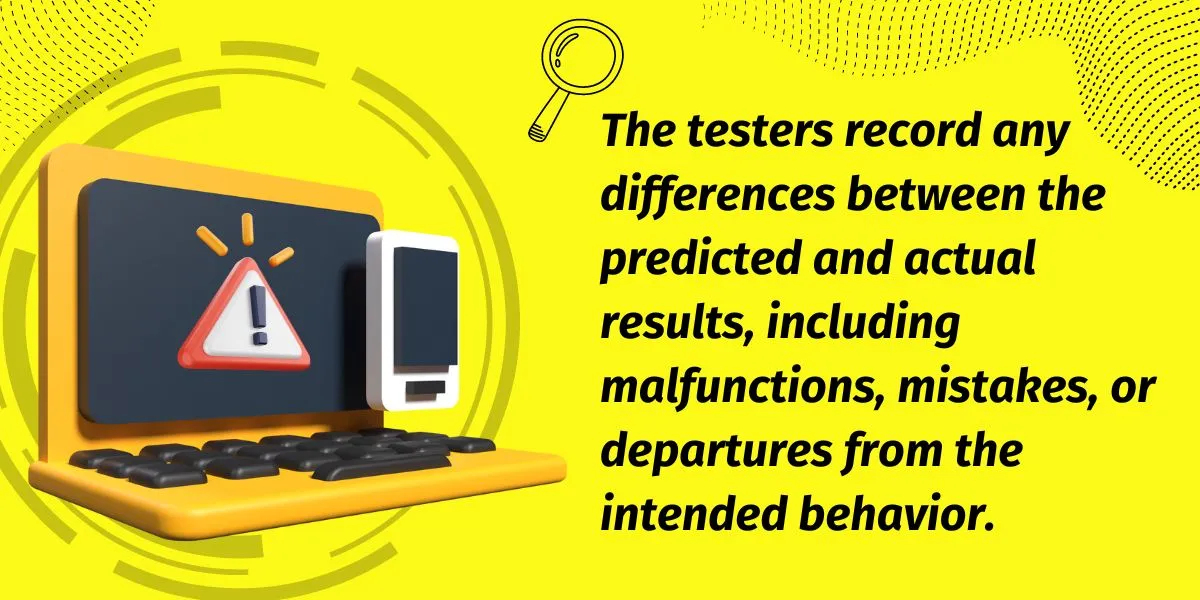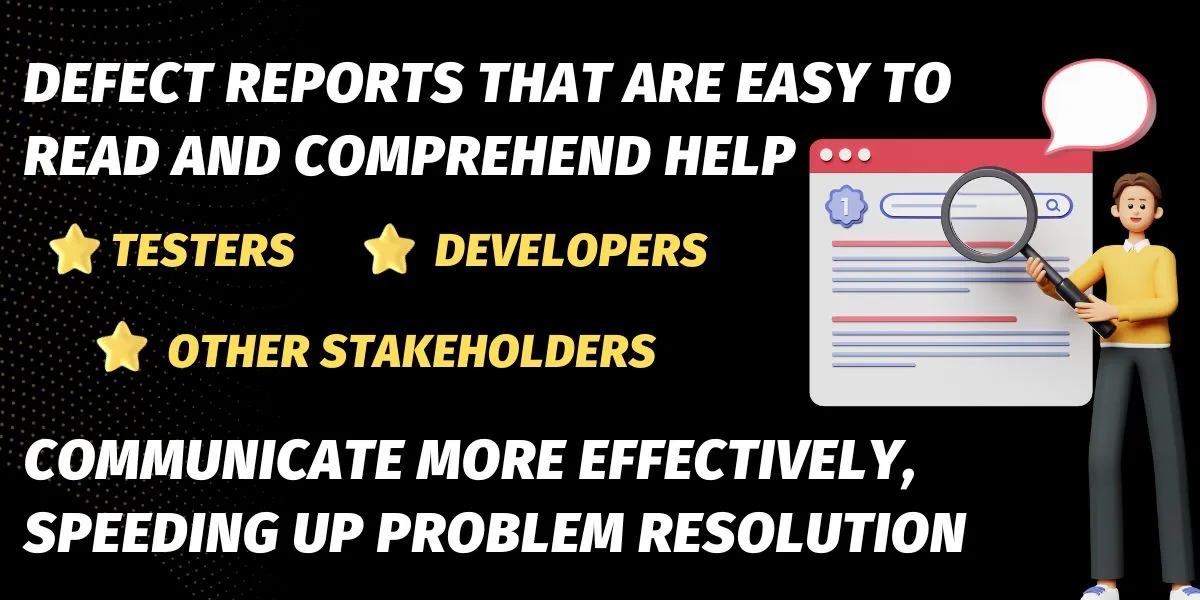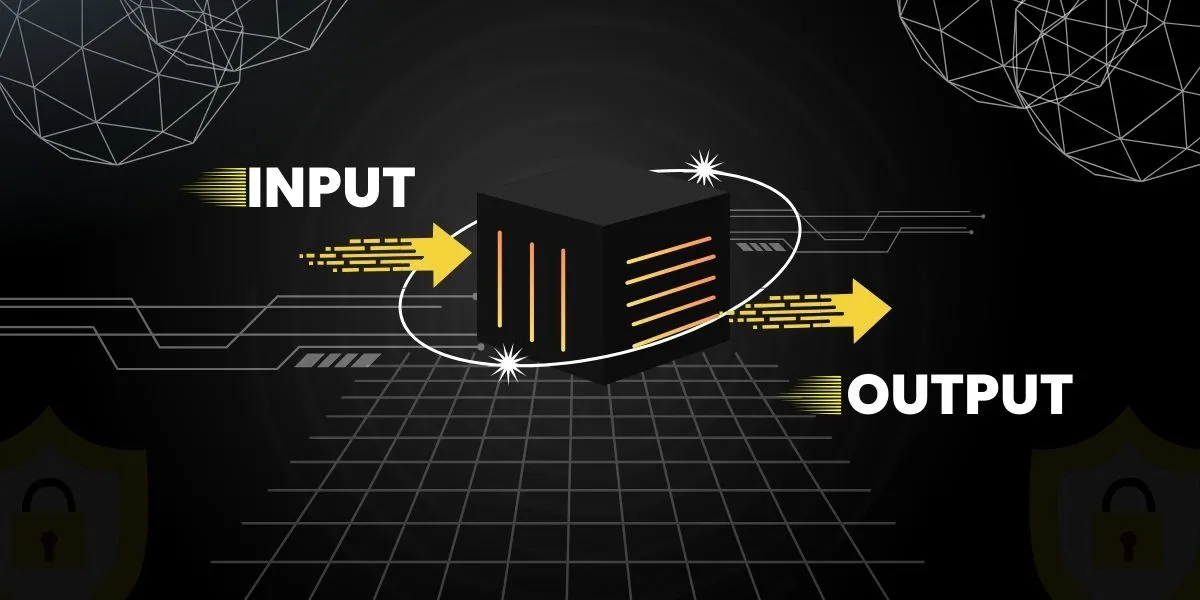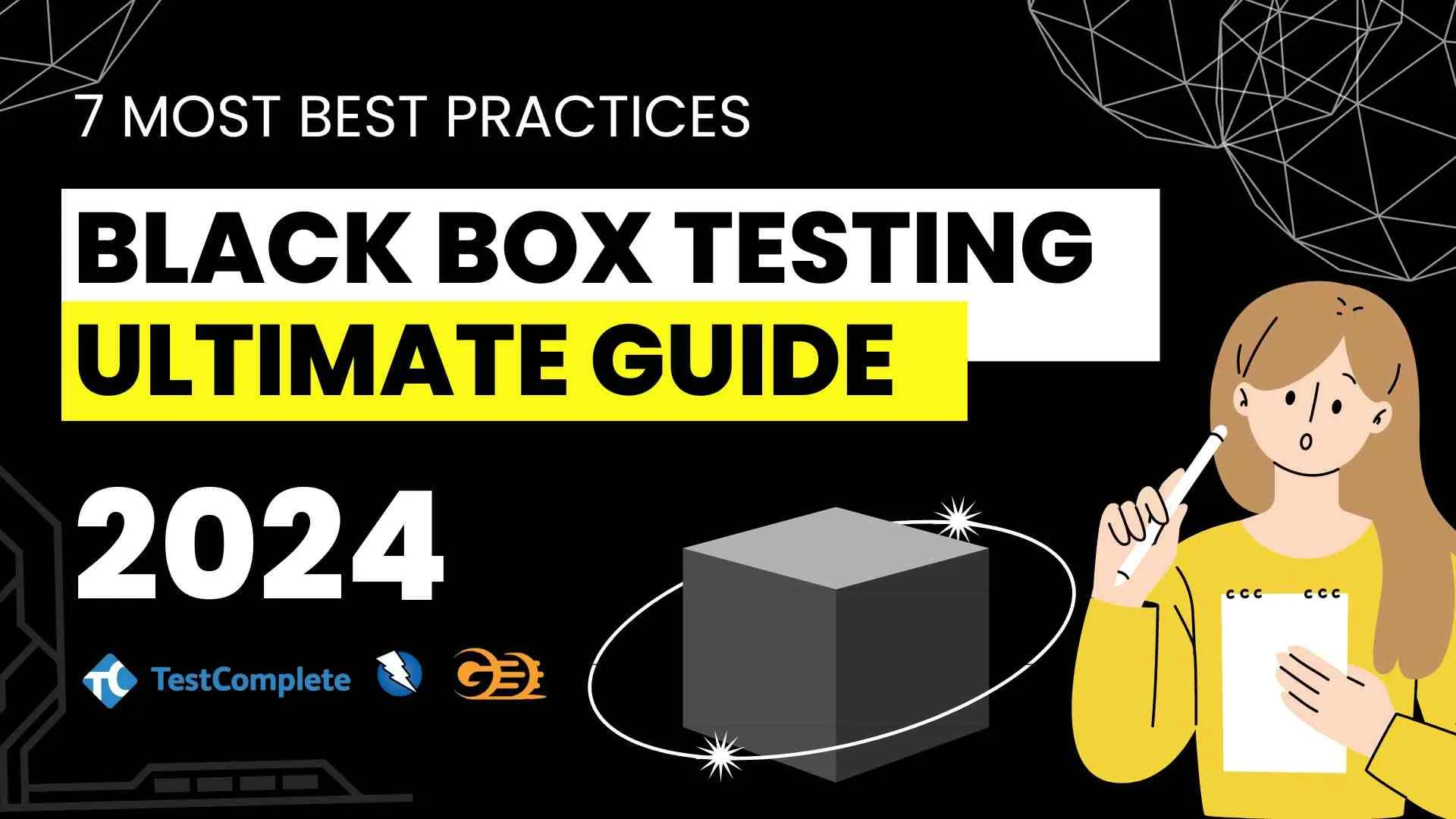📦Picture yourself receiving a sealed box and not knowing what's inside. Your job? You must evaluate it purely based on input and output regarding functionality, performance, and dependability. Fascinating, isn't it? 📦
.webp)
You, as a reader, will gain several valuable insights and knowledge regarding black box testing from this blog, including:
📌Comprehensive Coverage of Black Box Testing: You will gain a thorough understanding of black box testing, including its concepts, processes, types of software testing, best practices, tools, advantages, disadvantages, and real-world applications.
📌Difference from White Box Testing: The blog clarifies the differences between black and white box testing, helping you understand when to use each methodology.
📌Real-World Success Story: The blog provides a success story highlighting the impact of black box testing in enhancing user experience and performance in e-commerce platforms.
🖥️Black box testing in software engineering provides a distinct viewpoint on quality assurance in this ever-changing field, functioning as both an art and a science.

Black box testing techniques are also valuable for functional testing of AI/ML systems, ensuring that they perform as expected and meet user requirements. Testers focus on inputs and outputs, evaluating the model's behavior across various scenarios to identify bugs or inconsistencies.🖥️
Additionally, it differs from unit testing. While black box testing evaluates the software's overall behavior from the standpoint of the end user, unit testing verifies the internal workings of the code. For software programs to be reliable and of high quality, both strategies are necessary.
It differs from automated testing as well. Black box testing involves testing without access to internal information, whereas automated testing uses software tools or robots to expedite and simplify the development cycle.
Join us as we delve into black box testing, from its basics to advanced techniques, industry standards, and real-world uses. We'll uncover the secrets of black box testing and discover how to ensure flawless software.
What is Black Box Testing?
🕵️♂️Black box testing is similar to inspecting an automobile without being aware of its internal construction. Without access to the engine or mechanics, testers examine the vehicle's functionality. Rather, they observe how the automobile reacts by manipulating elements like the pedals and steering wheel. Similar to how drivers operate these settings without being aware of what's happening below.
This kind of testing is crucial since it assists in identifying issues that drivers may encounter, including a malfunctioning brake or a sticky accelerator.
Infrastructure testing determines if the roads and bridges can support the weight and speed of the automobile, whereas black box testing concentrates on how the vehicle operates on the road. It is essential to test both to ensure the vehicle operates smoothly and safely.🕵️♂️
When is Black Box Testing Required?
🧪From the first phases of requirement collecting to the ultimate release and beyond, black box testing is crucial to the software development lifecycle. In the following situations, black box testing is beneficial:
- Conditions Validation: Black box testing aids you in the early phases of software development by confirming that the program satisfies the requirements and matches user expectations.
- Functional Testing: It helps you in verifying the software's valuable features, which mostly depends on black box testing.
- User Acceptance Testing (UAT): enables you to mimic real-world usage scenarios and spot differences between expected and actual behavior.
- Regression Testing: By concentrating on the software's outside behavior regardless of internal modifications, black box testing aids you in detecting regression flaws.
- Integration Testing: Black box testing confirms that components in integrated systems with several modules or components work together harmoniously to get the intended results.
- Security Testing: A software application's security stance may also be evaluated through black box testing.
The Black Box Testing Process in Five Steps
🛠️Black box testing is a methodical approach to evaluating a software application's behavior and functioning. Let's examine each of the five steps in more detail:
- Analysis of Requirements: The first step is to understand the needs and specifications of the tested program.

- Test Case Structure: The requirements analysis is used by testers to create test cases that span a range of use patterns and scenarios. Decision table testing, boundary value analysis, and equivalency partitioning are frequently employed to create thorough test cases.
.webp)
- Test Case Execution: Testers run the software application through the prepared test cases during this stage. They engage with the application's user interface or APIs, input the specified data, and see the results produced.

- Defect Reporting: Testers record inconsistencies as defects or problems in a defect tracking system when they are discovered during the execution of a test case. Every fault has all necessary information recorded, including how to replicate it, how serious it is, and how urgent it is.

- Defect Resolution and Retesting: Following the reporting of defects, developers look into the underlying causes and apply changes to resolve the problems found. This iterative procedure is carried out until the program satisfies the required quality standards and is prepared for release.

Why Should You Combine Multiple Testing Approaches?
Combining the various testing ideas like Black Box, Penetration, Continuous, and Performance Testing results in a thorough testing strategy that addresses several software quality factors, including:
-compressed.jpeg)
Discover the Process with an Example Test Case
🌐To illustrate the black box testing process, let's consider a simple example involving a login functionality for a web application:
🔑Requirement: The login page should allow registered users to authenticate using their username and Password.
✏️Test Case Design:
.webp)
🔍Test Case Execution:
.webp)
🚩Defect Reporting:
.webp)
🛠️Defect Resolution and Retesting:
.webp)
Following this example test case, we can understand how the black box testing process unfolds, from requirement analysis to defect resolution. This structured approach enables testers to systematically assess the software's functionality and validate its behavior against expected outcomes.🌐
Automated and Manual Black Box Testing
Manual testing is like playing detective and not knowing what's inside a mysterious box. Consider yourself tasked with opening a sealed box and determining its contents and workings while prohibited from opening it.
First, you shake the box and listen for odd sounds or rattles. You might tap it to feel for any loose or weak areas. Next, you may experiment with different button or switch configurations on the box and see how it reacts.
You're making notes on everything you notice during this procedure, including any strange behaviors, surprising responses, or anything that doesn't seem right.
Automated testing is similar to having a robot investigator look into the enigmatic box on your behalf. You may program a robot to conduct the shaking, tapping, and button pushing on the box on your behalf rather than doing it by hand.
3 Fundamental Types of Black Box Testing
🎯There are several types of black box testing, each designed to meet specific needs and testing goals. Let's investigate the three main categories of black box testing:
Functional testing: This testing assesses a software application's functionality to ensure it does its intended duties. Validating the software's features, functions, and capabilities by the requirements is the primary goal of testers. Integration testing and smoke testing are a few types of software testing.
.webp)
Smoke testing is like making sure the automobile starts. It is a crucial method for ensuring everything operates as it should.
Non-functional testing: Often referred to as quality attribute testing, non-functional testing concentrates on product features other than functionality. Features including performance, usability, dependability, scalability, and security are all evaluated in this kind of testing.

Regression testing: It verifies that new software improvements or modifications haven't negatively impacted already-existing features. Rerunning previously completed regression tests allows testers to confirm that the product continues functioning as intended following code changes, bug patches, or system upgrades.
.webp)
What is Sanity Testing, and how does it relate to Black Box Testing?
You may concentrate your testing efforts on more in-depth testing later by using sanity testing to identify any significant, evident issues early on. A short check to make sure everything is going according to plan is similar to checking to see whether the oven is heating up before committing to baking the entire cake.
A basic sanity test may entail starting the application, entering your credentials, and perusing the menu to verify that all choices are visible and correctly loaded.
In black box testing, exploratory testing is like embarking on a journey without a plan or handbook. You can explore and learn the program or system on your terms without adhering to a rigid schedule.
This assures you that the software is functioning as intended if you can accomplish it without any hiccups or issues.
What are the 10 Best Practices for Black Box Testing?
🚀Effective black box testing requires a strategic approach and adherence to best practices to maximize test coverage, efficiency, and reliability. Let's delve into the top 10 best practices for black box testing:
- Thorough Requirement Analysis: Start by thoroughly understanding the software requirements and specifications.
- Prioritize Test Cases: Prioritize test cases based on factors such as criticality, risk, and frequency of use.
- Equivalence Partitioning: Apply equivalence partitioning to group inputs into equivalent classes, reducing the number of test cases needed to cover various input scenarios.
- Boundary Value Analysis: Supplement equivalence partitioning with boundary value analysis to test boundary conditions and edge cases.
- Decision Table Testing: Utilize decision table testing to test combinations of valid and invalid inputs and conditions systematically.
- State Transition Testing: For systems with distinct states or modes of operation, employ state transition testing to validate transitions between states.
- Automation: Embrace test automation and ideal automation tool to streamline repetitive and time-consuming test activities.
- Continuous Refinement: Continuously refine test cases, test data, and test procedures based on feedback, lessons learned, and evolving requirements.
- Comprehensive Defect Reporting: Ensure clear and complete documentation of defects, including detailed descriptions, steps to reproduce, severity, and impact.
- Collaboration and Communication: Foster open communication among stakeholders, including testers, developers, business analysts, and product owners.
Success Story With Black Box Testing
🌟Black box testing has played a pivotal role in ensuring the quality and reliability of high-quality software products across diverse industries. Let's delve into a success story highlighting the impact of black box testing in a real-world scenario:
Case Study: Enhancing User Experience with Black Box Testing
📦Industry: E-commerce
⚠️Challenge: An e-commerce platform faced checkout errors, slow loading times, and inconsistent user experiences.
🧩Approach: They designed comprehensive test cases covering key functionalities by prioritizing black box testing and collaborating closely with stakeholders.
📈Implementation and Results: With a focus on user satisfaction and performance optimization, they significantly improved user experience, performance, and revenue.
💡Key Takeaways: This success underscores the transformative impact of black box testing in addressing complex challenges and delivering superior software solutions.🌟
.webp)
7 Types of Tools for Black Box Testing
🤖Let's explore seven types of tools apart from Frugal testing services, commonly used for black box testing:
- Test Automation Tools: Streamline test case execution and regression testing with tools like Selenium, HP UFT, and TestComplete.
- Load Testing Tools: Evaluate performance and scalability under high user traffic using tools such as Apache JMeter, LoadRunner, and Gatling.
- Security Testing Tools: Identify vulnerabilities and security weaknesses with OWASP ZAP, Burp Suite, and Acunetix tools.
- API Testing Tools: Verify functionality and reliability of APIs using tools like Postman, SoapUI, and RestAssured.
- Accessibility Testing Tools: Ensure compliance with accessibility standards like WCAG using tools like Axe, WVE, and AChecker.
- Cross-Browser Testing Tools: Validate compatibility across browsers and platforms with tools like BrowserStack and Sauce Labs.
- Performance Monitoring Tools: Track real-time performance metrics and system health with tools like New Relic, Datadog, and AppDynamics.
These tools enhance test coverage, efficiency, and quality assurance in black box testing scenarios, empowering you to deliver robust and reliable software solutions to users. 🤖
Advantages and Disadvantages of Black-box Testing

🔄There are some pros and cons attached to black box testing.
Advantages of Black-box Testing:
🔍Independence from Implementation Details: Black box testing evaluates the software's external behavior without delving into its internal code or implementation specifics.
🤖Simulation of User Experience: Through black-box testing, real-world user interactions are simulated, offering insights into how users engage with various features. By mimicking user behavior, it enhances overall user satisfaction and adoption.
🎯Enhanced Test Coverage: Black-box testing encompasses various testing techniques, including functional, non-functional, and regression testing. Test cases are designed to cover a broad spectrum of use cases, ensuring thorough test coverage and validation of software functionalities.
Disadvantages of Black-box Testing:
🔒Limited Visibility into Internal Logic: Black-box testing lacks insight into the software's internal code structure and implementation details, limiting testers to assessing its behavior externally.
📋Dependency on Test Inputs: The effectiveness of black-box testing heavily relies on the quality and relevance of the provided test inputs. Ensuring thorough test coverage and accuracy necessitates careful design of test cases.
🔧Limited Control Over Test Environment: Black-box testing often requires specific environments or datasets to simulate real-world usage scenarios accurately. Maintaining consistency and reproducibility across different test environments, especially in complex or distributed systems, presents challenges.
Explore these Black Box Testing Test Cases for Higher Understanding
🧩Black box testing test cases are crucial tools in assessing software functionality and reliability from an external perspective. Here's a summary of the critical aspects covered:
- Test Case Design: Test cases are meticulously crafted to evaluate different aspects of the software's behavior, ensuring thorough coverage of functionalities and potential use cases.
- Scenario-based Testing: Test cases simulate real-world usage scenarios, helping identify potential defects or inconsistencies and ensuring the software meets user expectations.
- Boundary Value Analysis: Test cases evaluate how the software handles boundary conditions and edge cases, ensuring its robustness and error-handling capabilities.
- Equivalence Partitioning: Test cases group inputs into equivalent classes to optimize automated and manual testing efforts both while maximizing input space coverage.
- Positive and Negative Testing: Test cases validate expected behavior and error handling, ensuring the software behaves as expected under various conditions.
- Regression Testing: Test cases verify that recent changes haven't introduced new defects or affected existing functionalities, ensuring software stability over time.
- Comprehensive Test Coverage: Test cases address various aspects of the software's behavior, identifying defects, vulnerabilities, and performance issues across the application.
Exploring black box testing test cases provides practical examples of its application, offering valuable insights into its effectiveness in ensuring software quality, reliability, and user satisfaction.🧩
What is the Difference between Black Box & White Box?
🧰White box testing involves delving into the software's internal logic and code implementation. Testers gain insights into system architecture, code flow, and data structures, enabling them to assess the inner workings of the software.
.webp)
Testing Objectives of white box testing
White box testing focuses on uncovering errors, inefficiencies, and vulnerabilities within the code. Testers scrutinize the internal code structure to verify its correctness, adherence to coding standards, and optimization.
It requires specialized knowledge of programming languages and internal code structures. Testers may overlook user experience and functional requirements, focusing primarily on code-level verification.
Integrating black-box and white-box testing methodologies within comprehensive testing strategies optimizes test coverage and ensures software reliability. By combining these methodologies, testers can validate functional requirements and internal code integrity, enhancing overall software quality.🧰
Grey Box Testing
Testing using grey boxes is similar to looking through a slightly ajar door to see what's within. Testers are knowledgeable about the software's construction, but not entirely. Their testing is guided by this incomplete understanding, which enables them to identify problems that may not be apparent from the outside. It functions similarly to a tip or clue that guides users through the software and reveals hidden issues.
Here is a brief summary of the topics we have discussed
🔍Black box testing is a type of software testing methodology focused solely on evaluating an application's external behavior without knowing its internal workings. Black box testing is essential throughout the software development cycle and different levels of testing, from requirements validation to release.
It's beneficial in various scenarios, including conditions validation, functional testing, user acceptance testing, regression testing, integration testing, and security testing.🔍
Know Our Services
🧠At Frugal Testing, we specialize in providing top-notch black box software testing services dedicated to ensuring the quality and reliability of you and your development team's software applications. We employ rigorous testing methodologies to thoroughly evaluate your software applications' functionality and performance. Our testing processes are designed to simulate real-world user interactions, ensuring that your software meets end-user expectations.
Partner with Frugal Testing for expert black box testing services that enhance the quality and reliability of your software applications.🧠
People Also Ask
What is the purpose of black box testing?
The primary purpose of black box testing is to assess a software application's functionality and behavior without knowing its internal code structure or implementation details.
Is Black Box testing preferred?
Black box testing is preferred in many scenarios, mainly when testers must evaluate software from an end-user perspective or when access to internal code is restricted.
What is Grey Box Testing?
Black box and white box testing techniques are combined in grey box testing. Because they have some inside knowledge of the product, testers write tests using internal code structures and outward behavior.
Can you perform Black Box testing along with white box testing?
Depending on what you need to test, you can do black and white box testing concurrently or independently. White box testing examines the logic and code inside the program, whereas black box testing examines how the program functions from the outside.
Main difference between White and Grey box Testing?
Test cases for grey box testing are created with a limited understanding of the internal code structure. It combines white box and black box testing techniques to evaluate software extensively.





%201.webp)

